Samara hill fort, also known as Ajinkyatara, is very close to the south of the Samara city. Situated 994 metres above sea level, the fort has a east-west length of about 1000 metres and a breadth of about 500 metres. In its heyday the fort was protected by a strong masonry wall with bastions. There were two gates. The main gate, made formidable by high buttresses, is close to the north-west corner, now approachable by a pukka road. The small gate in the south-east corner was postern one. Inside the fort there were tanks, wells, buildings, temples and stores, all in ruins now. Today there is a wireless relay station located at the top in the fort.
According to an inscription dated 1192 AD, the Shilahara king Bhoj II, who ruled from Panhala, constructed at least 15 forts around Samara-Kolhapur, which included among others, the Ajinkyatara or Samara fort. The fort was extended and renovated by Bahamani Sultans. Captured by Shivaji in 1673 AD, the fort played an important role in his military operations. When Aurangzeb took it over in 1700 AD he named it ‘Azamtarar’. After his third son Prince Azam. The name ‘Ajinkyatara’ might be a corruupton of Azamtara. Recatpured by the Marathas in 1701 AD, the fort was the seat of the Bhosale Rajas of Samara from 1749 to 1848 AD when the state was annexed by the East India Company.

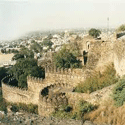 Jhansi Fort
Jhansi Fort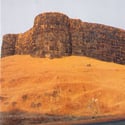 Suvarnadurg Fort
Suvarnadurg Fort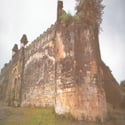 Pauni and Nagardhan Fort
Pauni and Nagardhan Fort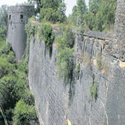 Ahmadnagar Fort
Ahmadnagar Fort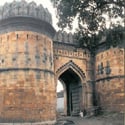 Narnala, Akola and Achalpur Forts
Narnala, Akola and Achalpur Forts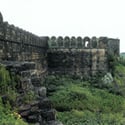 Ballalpur, Chandrapur and Manikgarh Forts
Ballalpur, Chandrapur and Manikgarh Forts